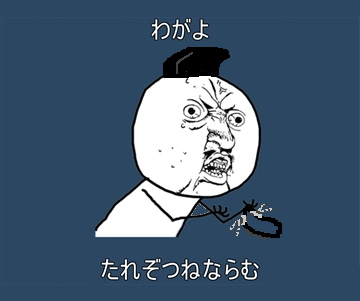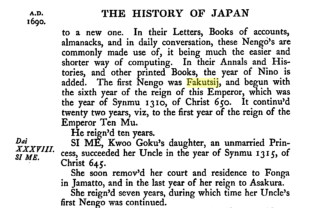A savage poem
Here's an interesting kyōka (狂歌) I found in a Nagata Seiji 永田生慈-edited facsimile of Hokusai's Tōto meisho ichiran 東都名所一覧 ("Catalog of famous sites in the eastern metropolis"). It's on the "Asukayama" page, and is credited to Ikokujin 夷国人 ("Barbarian, Outlander"):
あすか山土器(かハらげ)ほどにさかつきも上手になげて渡す御手もと
Asukayama/ kawarage hodo ni/ sakazuki mo/ jōzu ni nagete/ watasu otemoto
This requires some unpacking. Kawarage is a reference to kawarake-nage 土器投げ, "stoneware-throwing". I quote the industrious Robin D. Gill's Cherry Blossom Epiphany:
The description of the saucer-throwing from Asuka (found at a website and in Ono Sawako's book) makes it seem like a precursor to the frisbee, i.e. pure fun, but all the other descriptions of the practice locate it at or near a mountain temple, which loaded them with supernatural signficance. Most commonly, they were thought to rid one of bad luck or help ward off disease and whatnot [...] Almost as commonly, it was explained that the more beautifully, or the longer they could be thrown the more successful one would be with whatever endeavor one made a wish about. At one temple, the same saucer that warded off bad luck brings good luck if it passes through a hoop dangled from a tree near the cliff.
Meanwhile, otemoto is most commonly encountered in modern Japan as a polite word for "chopsticks" (you might remember it from the last paper sleeve you withdrew a disposable pair from), but in this case it is clearly used in the sense of "(skillful) way of handling a sake cup (sakazuki)."
I am also taking an executive decision to interpret 上手に as jōzu ni ("skillfully") rather than uwate ni ("upstream, towards the capital" to name just one).
So this gives us:
Asukayama/ where stoneware flies/ and sake cups are tossed/ from hand to hand/ with equal artistry
Here's a senryū about kawarake:
土器が逸れて桜の花が散る
Kawarake ga/ sorete sakura no/ hana ga chiru
The stoneware goes/ astray; the cherry/ blossoms fall
This is an excellent example of what senryū do better than kyōka. It's not especially witty, or refreshingly phrased, but it does paint an excellent word-picture: plate → astray → sakura → fall. You can almost hear the errant saucer hitting the branches. The original is also helped by the availability of the word chiru, which is as compact and fundamental as the English word "fall" but implies more vigor and wildness. (So why not use "scatter", you say? Because I had a perfect row of six iambs in sight and I couldn't bear to weaken the ending.)
Getting back to the author's pseudonym, "Ikokujin," this is probably a reference to the fact that kyōka themselves were also known as ebisu-uta 夷歌 ("barbarian poems"). As the History of Kyoka I linked at the top sez:
In the Kyoto-Osaka area where the tradition of a Waka was so well established, they could not think of a mockery of the Waka. The country bumpkins of Edo whose Waka was not well established or, better to say, who had a sense of inferiority due to lack of a traditional Waka and who, because of the inferiority complex or envy, keenly wanted to put the people of the Kyoto-Osaka area to shame abruptly hit on an idea of jeering at a Waka. [...] Composers of Edo Kyoka sometimes called their poem savage poem or savage verse. A poem in the Kyoto-Osaka area being a Waka, a poem of Wa country, a poem made in the eastern countryside far from the center of Japan and by a savage must be a savage poem.
![[No-sword]](http://no-sword.jp/images/site/no-sword_banner.jpg)




